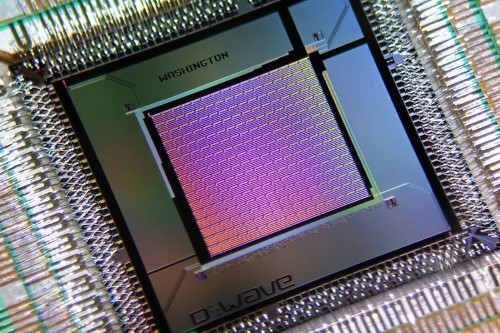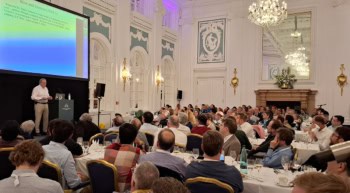
By Hamish Johnston
This morning I was speaking to quantum-entanglement expert Jian-Wei Pan, who shares the Physics World Breakthrough of the Year 2015 award for his work on quantum teleportation. Pan briefly mentioned research reported earlier this week by John Martinis, Hartmut Neven and colleagues at Google Research whereby a D-Wave 2X quantum computer was used to perform a computational task 100 million times faster than a classical algorithm.
This is a remarkable result, but does it mean that D-Wave’s controversial processors actually work as quantum computers? Some quantum-computing experts are urging caution in how the research is interpreted.
Based in Canada, D-Wave Systems is a commercial company that makes quantum processors based on superconducting circuits. The D-Wave 2X has more than 1000 such circuits, each representing a quantum bit (qubit) of information. Rather than being a quantum version of the universal processor in your laptop, the D-Wave 2X uses a protocol called quantum annealing to solve a very specific problem – how to find the global minimum value of a very complicated function.
The function can be thought of an energy landscape and the algorithm makes use of quantum-mechanical tunnelling to travel through the energy peaks and eventually find the lowest valley. The preprint from Google has the snappy title “What is the computational value of finite range tunnelling?” and looks at the special case where the energy peaks have a specific shape.
They found that the D-Wave 2X running quantum annealing is 100 million times faster at finding the global minimum than a conventional computer running a simulated annealing algorithm. In the latter, thermal fluctuations, rather than quantum tunnelling, allow the algorithm to “climb” over energy peaks.
Sounds great, but there are some important caveats, as MIT quantum-computer expert Scott Aaronson points out on his blog Shtetl-Optimized. It seems, for example, that there is another classical algorithm that can solve these problems just as fast as the D-Wave 2X. He also points out that because D-Wave 2X is designed specifically to solve this type of problem, its advantage may simply lie in its design rather than its “quantumness”. In other words, it’s just a well-designed classical computer.
I highly recommend reading Aaronson’s post, which was written after consulting Mathias Troyer of ETH Zurich, who is an expert on quantum annealing and has studied D-Wave’s processors. Also very illuminating is a post by Neven on the Google Research Blog called “When can quantum annealing win?”.
A few years ago I visited D-Wave’s headquarters in Vancouver and spoke to co-founder Geordie Rose. On the same trip I also talked to John Martinis and several other quantum-computing experts and put all of the conversations together into the above podcast. In it you will hear Rose explain how quantum annealing works and learn about Martinis’s vision for quantum computing.
Google and D-Wave are not the only organizations trying to build a quantum computer. Included in this year’s Physics World top 10 breakthroughs is the first ever silicon quantum logic gate, which was built by Andrew Dzurak, Menno Veldhorst and colleagues at the University of New South Wales and Keio University.



